Sekt sparkling wines from Germany and Austria are gaining recognition and popularity worldwide. As the most famous sparkling wines in these countries, they offer a delightful alternative to traditional Champagne. Boasting a range of styles and flavors, Sekt wines are gaining attention from wine enthusiasts and casual drinkers alike.
The history of Sekt wines can be traced back to France, yet they have evolved into a distinctly German and Austrian product. Quality ranges from easily accessible and affordable grocery store options to high-end, complex bottles that can rival premium Champagne. Production methods differ among vintners, resulting in diverse color, taste, and quality profiles to cater to a variety of palates.

While the names Rotkäppchen-Mumm, Henkell and Söhnlein, and Schloss Wachenheim may not be familiar to all, these three top sparkling wine houses produce a staggering volume – 575.4 million bottles per year (2008 data). As more people discover these effervescent gems, Sekt wines are poised to make a lasting impression on the global wine scene.
History of Sekt Sparkling Wines
Origins in Germany and Austria
Sekt is the German word for sparkling wine, and it is widely enjoyed in Germany and Austria. The naming of Sekt was actually quite accidental; originally, it referred to a sweet Spanish Sherry popular in Central Europe during the 17th and 18th centuries. The history of Sekt can be traced back to the emergence of sparkling wines across Europe.

One of the earliest records of sparkling wine production is from the region of Languedoc, where Blanquette de Limoux was being produced by the monks of Saint-Hilaire as early as 1531. This type of wine focused on the Mauzac grape as the primary ingredient. Over time, the process of making sparkling wines evolved and spread to other regions, including Germany and Austria, where Sekt started gaining popularity.
Influence of Champagne Production
The art of producing sparkling wines was heavily influenced by the advancements made in the Champagne region of France. In 1662, the English scientist Christopher Merret presented a paper detailing how adding sugar to a wine before bottling it could cause it to sparkle. This understanding laid the foundation for modern sparkling wine production, including Sekt.
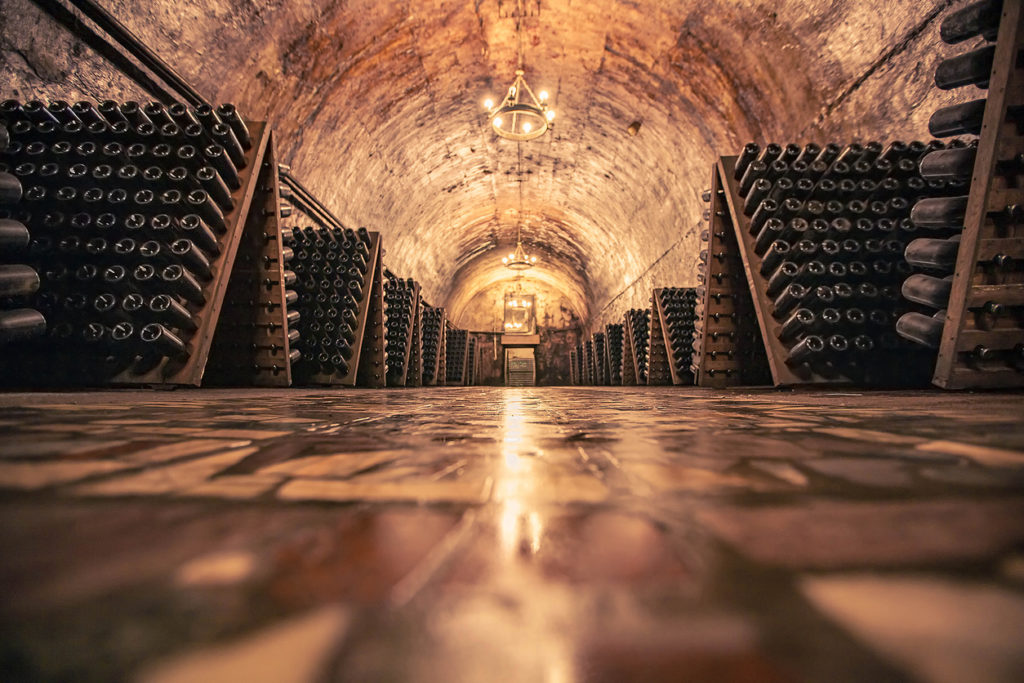
The Champagne method, also known as the traditional method (méthode traditionnelle) of producing sparkling wines, involves a secondary fermentation process within the bottle. This process adds complexity and effervescence to the wine, yielding a high-quality beverage. As a result, this method has become the gold standard for sparkling wine production, including Sekt in Germany and Austria.
Today’s Sekt production takes cues from champagne methods while showcasing the unique grape varieties and terroirs of Germany and Austria. High-quality Sekt wines showcase the craftsmanship and quality of the winemakers in these regions, distinguishing them from mass-produced alternatives. This focus on excellence helps cement the reputation
Production Methods
Traditional Method
The Traditional Method, also known as Méthode Champenoise, is used to produce high-quality Sekt wines. This method involves a second fermentation process that takes place in individual bottles. The wine is allowed to mature on its yeast for a minimum of 9 months, sometimes even years, in dark and cool cellars. This fermentation process adds complexity and depth to the finished wine, resulting in a premium product.
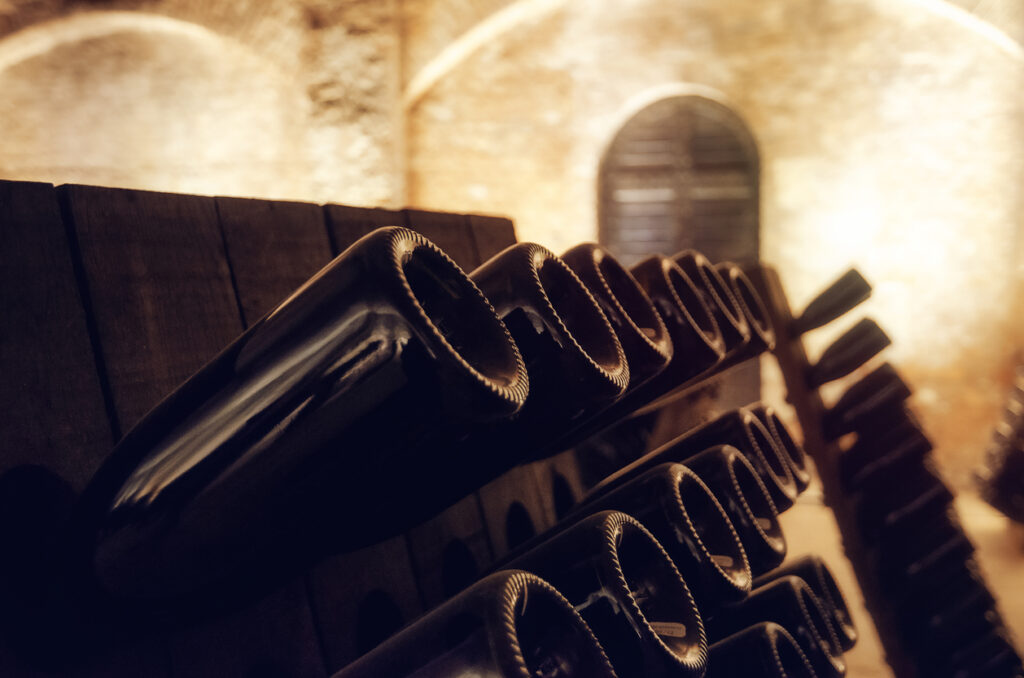
Transfer Method
The Transfer Method is similar to the Traditional Method but with a slight difference. Just like in the Traditional Method, the second fermentation takes place in individual bottles. However, once this fermentation process is complete, the wine is transferred to a pressurized tank where it is filtered, and the bottles are filled without disturbing the sediment. This method is less labor-intensive than the Traditional Method while still delivering quality sparkling wine.
Charmat Method
The Charmat Method, also popular for producing sparkling wines like Prosecco and Lambrusco in Italy, is another approach to making Sekt. The main difference from the previous methods is that the second alcoholic fermentation takes place in a closed, pressurized tank, rather than in the individual bottles. The liqueur de tirage is added in this same tank, which helps maintain a consistent quality of wine. The Charmat Method is generally faster and more cost-effective than the Traditional Method, but the resulting Sekt may not have the same complexity and depth of flavor as those produced using the Traditional Method.
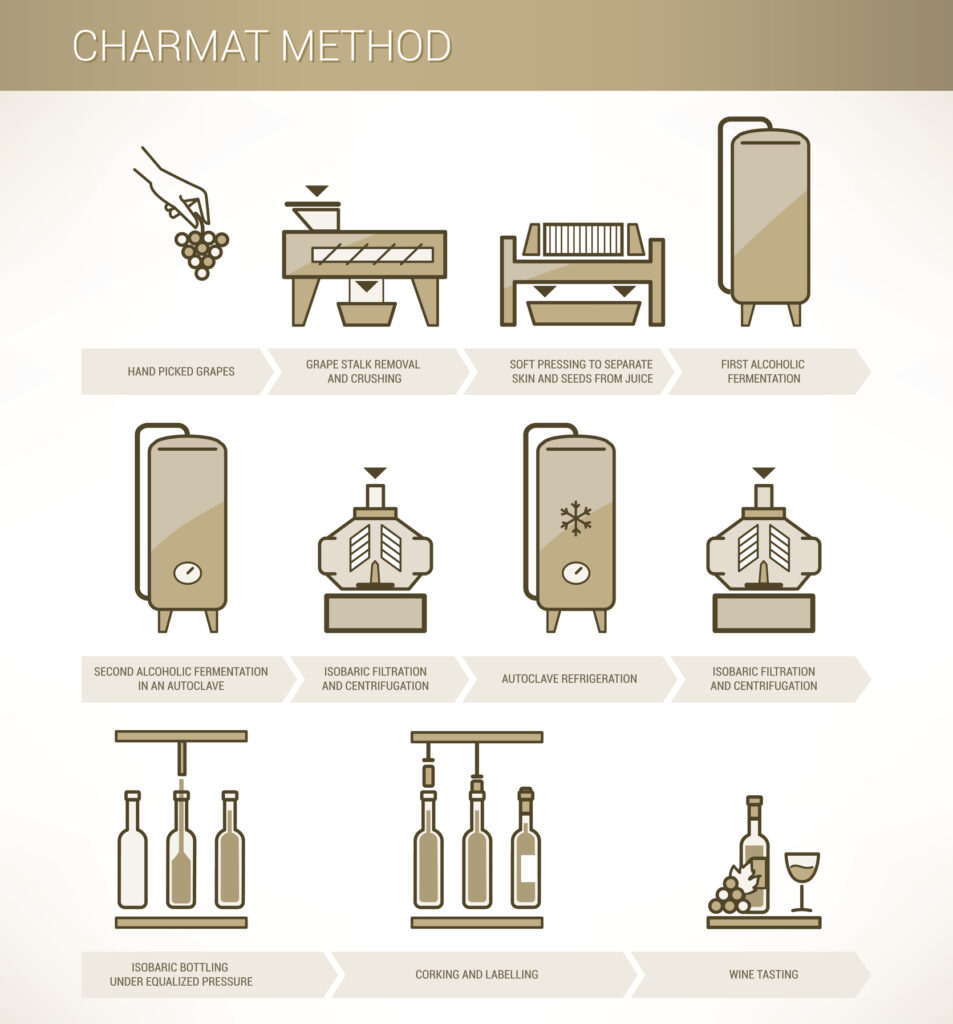
Types and Styles of Sekt
Deutscher Sekt
Deutscher Sekt refers to sparkling wines made exclusively from German grapes. The most common grape varieties used include Pinot Blanc, Riesling, Pinot Gris, and Pinot Noir. These wines often showcase Germany’s unique terroir and regional characteristics. Winzersekt, a subcategory within Deutscher Sekt, is a designation for wines made and bottled by small estate producers using only their own grapes. These wines typically offer the most character and complexity.
- Color: White, Rosé
- Grape Varieties: Pinot Blanc, Riesling, Pinot Gris, Pinot Noir
Österreichischer Sekt
Österreichischer Sekt refers to sparkling wines produced in Austria. Like Deutscher Sekt, these wines can be made from a variety of grapes. However, Austrian wines tend to focus on Grüner Veltliner, Welschriesling, Chardonnay, and Pinot Noir. The flavors in these wines often reflect Austria’s unique climate and terroir. Wineries must adhere to strict production guidelines to label their wines as Österreichischer Sekt.
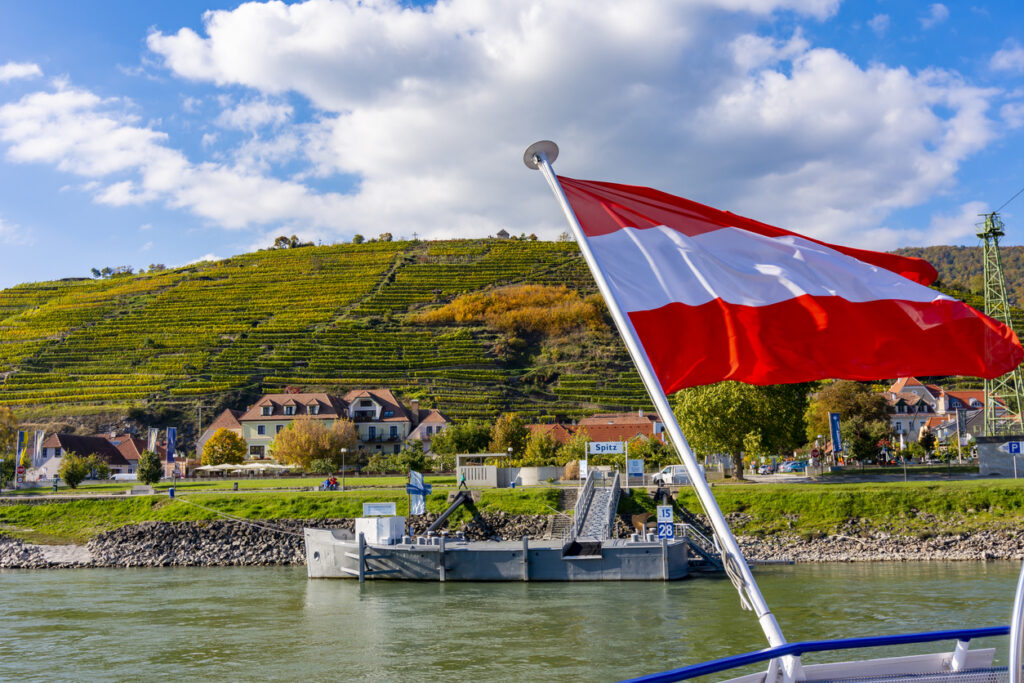
- Color: White, Rosé
- Grape Varieties: Grüner Veltliner, Welschriesling, Chardonnay, Pinot Noir
Reserve Sekt
Reserve Sekt is a designation given to the highest quality sparkling wines from both Germany and Austria. This results in making it a more exclusive category. These wines must follow specific production methods and have extended aging requirements. The result is premium sparkling wines with enhanced complexity and depth of flavor. The grape varieties used can be the same as those found in Deutscher Sekt and Österreichischer Sekt. The focus is on producing the best possible wines using these varietals.
- Color: White, Rosé
- Grape Varieties: Pinot Blanc, Riesling, Pinot Gris, Pinot Noir, Grüner Veltliner, Welschriesling, Chardonnay
Sekthaus Raumland – A Revelation in German Sparkling Wine
German sparkling wine has long been overshadowed by its French counterpart, Champagne. However, Sekthaus Raumland is changing that perception with their exceptional range of high-quality sparkling wines.
Founded in 1984 by Volker and Eva Raumland, Sekthaus Raumland produces some of the finest German sparkling wines on the market. The vineyard is located in Flörsheim-Dalsheim, a region known for its mineral-rich soil and ideal climatic conditions for grape cultivation. The winery’s commitment to using only the best grapes from the best vineyards has earned them numerous accolades over the years. Their sparkling wines were served at events at the Elysee-Palace in France.
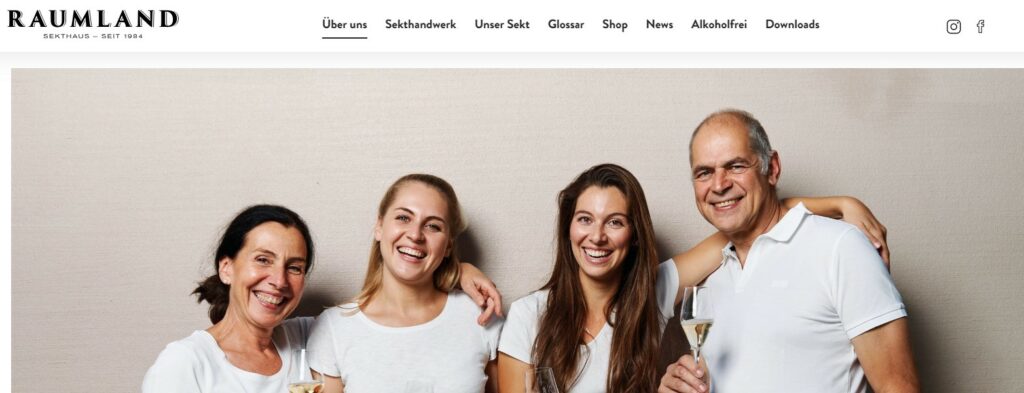
Their impressive selection ranges from classic brut and rosé to vintage cuvées and rare late-disgorged bottlings.
Regionality and Grape Varieties
Major Wine Regions
Sekt sparkling wines are primarily produced in Germany and Austria. In Germany, the most important wine regions for Sekt production include Rheingau, Mosel, Pfalz, and Baden, among others. Meanwhile, in Austria, prominent wine regions for Sekt include Wachau, Kamptal, Kremstal, and Neusiedlersee. Sparkling wine enthusiasts love these regions for their diverse soil conditions and optimal microclimates for grape cultivation. This allows for a distinct expression of terroir in Sekt wines.
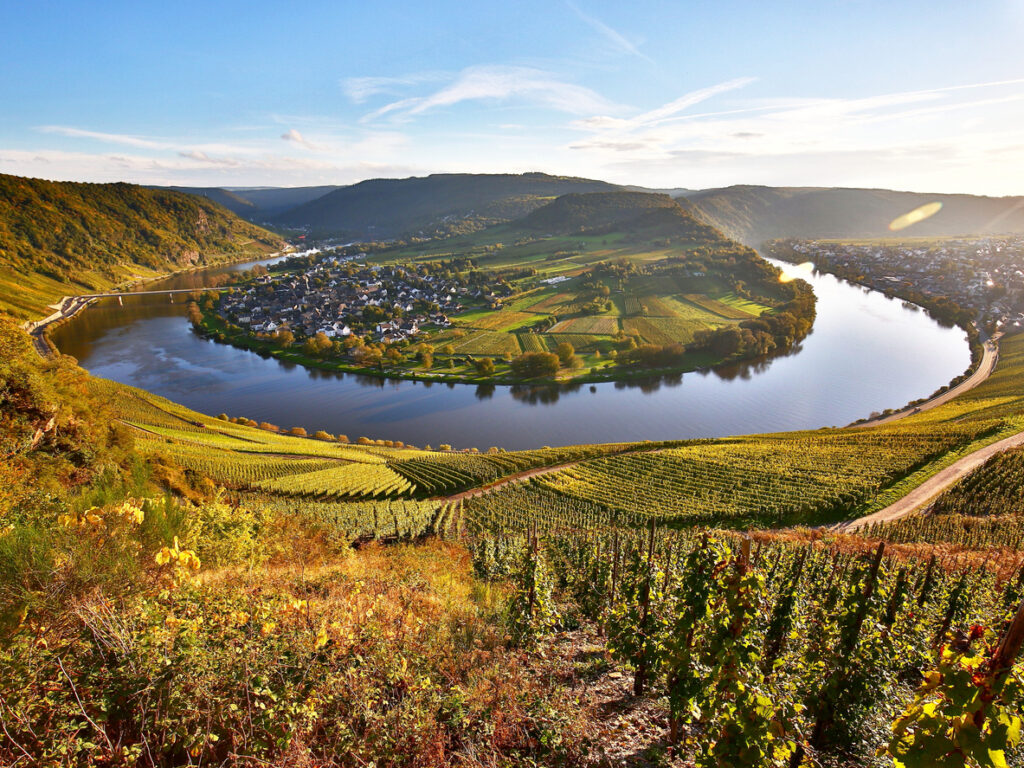
Common Grape Varieties
Sekt can be made from a variety of grapes, and the grape composition varies between German and Austrian Sekt wines. Common grape varieties used in the production of German Sekt include:
- Riesling: Wine enthusiasts consider Riesling as the most important grape variety in Germany. Riesling has an excellent aging potential and the aromatic, fruity profile it adds to wines.
- Pinot Noir (Spätburgunder): As the most planted red grape in Germany, Pinot Noir lends a complex, elegant character to Sekt while maintaining a balanced acidity.
- Pinot Blanc (Weissburgunder): With its approachable flavor profile, Pinot Blanc contributes to the fresh, fruity nature of many German Sekt wines.
In contrast, some typical grape varieties used in Austrian Sekt production are:
- Grüner Veltliner: As a native Austrian grape, wine lovers note Grüner Veltliner for its crisp acidity, peppery notes, and bright fruit flavors.
- Welschriesling: Often used for entry-level Austrian Sekt, Welschriesling imparts a fresh and floral character to the wines.
- Pinot Noir (Blauburgunder): Similar to its German counterpart, many wine makers appreciate Pinot Noir in Austrian Sekt production for its structural complexity and elegance.

Both German and Austrian Sekt wines may feature these grape varieties in single-varietal or blended compositions. Which provides a versatile range of flavors and styles for consumers to enjoy.
Pairing Suggestions
Ideal Food Pairings
Sekt, a sparkling wine from Germany and Austria, boasts fruity flavors, which makes it a versatile option for food pairings. Some of the top picks for pairing with Sekt include:
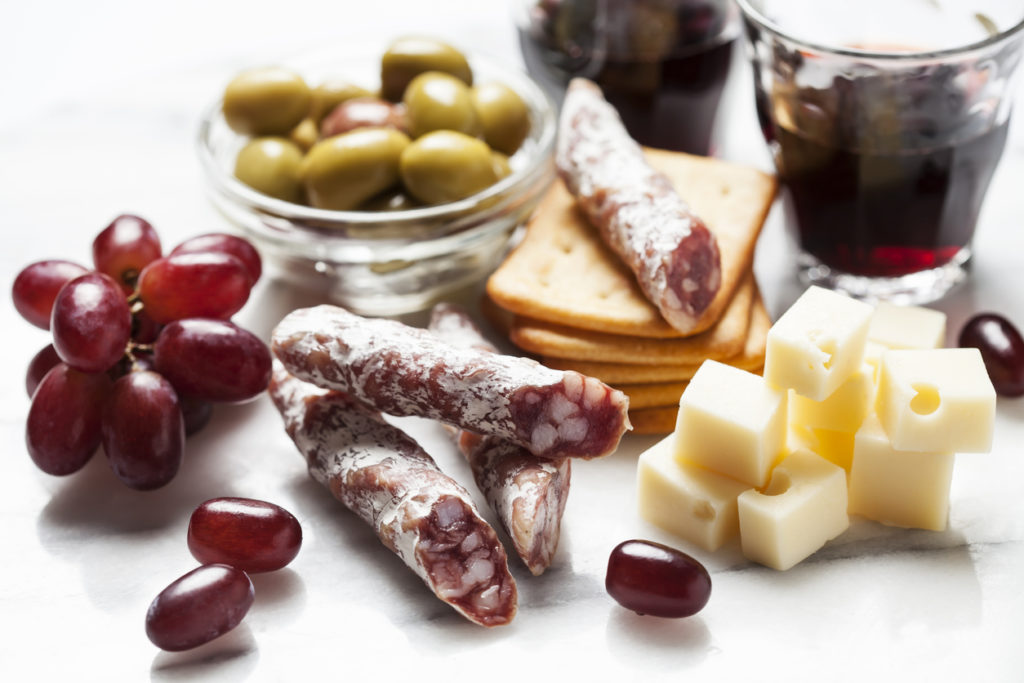
- Charcuterie boards: The combination of cured meats, cheeses, and crackers complements the bubbly nature of Sekt. It enhances the overall dining experience.
- Seafood dishes: The acidity and fizz of Sekt help to cut through the richness of seafood, such as oysters, shrimp, and smoked salmon. This creates a balanced flavor profile.
- Lighter fare: Salads, vegetable dishes, and lean proteins like chicken or fish pair well with Sekt. Due to its lighter and refreshing taste, which offsets the richness of the main course.
- Desserts: Fruit-based desserts, such as tarts or sorbets, make an excellent choice for enjoying with Sekt. The wine’s fruitiness enhances the sweet flavors of the dish.
Occasions for Enjoying Sekt
Sekt is a sparkling wine that suits various occasions, from casual gatherings to more formal events. Some moments when Sekt can be the perfect choice include:

- Picnics: Sekt’s light and refreshing qualities make it an ideal choice for outdoor gatherings, such as picnics or barbecues. It pairs well with various finger foods and lighter dishes, making it a crowd-pleasing option.
- Brunch: Sekt is a popular choice for brunch gatherings. Its fruity and fizzy characteristics complement a variety of breakfast and lunch dishes. You can enjoy it on its own or use it as a mixer for mimosas.
- Celebratory events: Similar to Champagne, Sekt is a fitting option for toasting and celebrating special occasions. These can be weddings, anniversaries, or milestone achievements.
- Wine tastings: For those interested in exploring different types of sparkling wines. Include Sekt in a wine tasting to introduce participants to these unique German and Austrian offerings.

